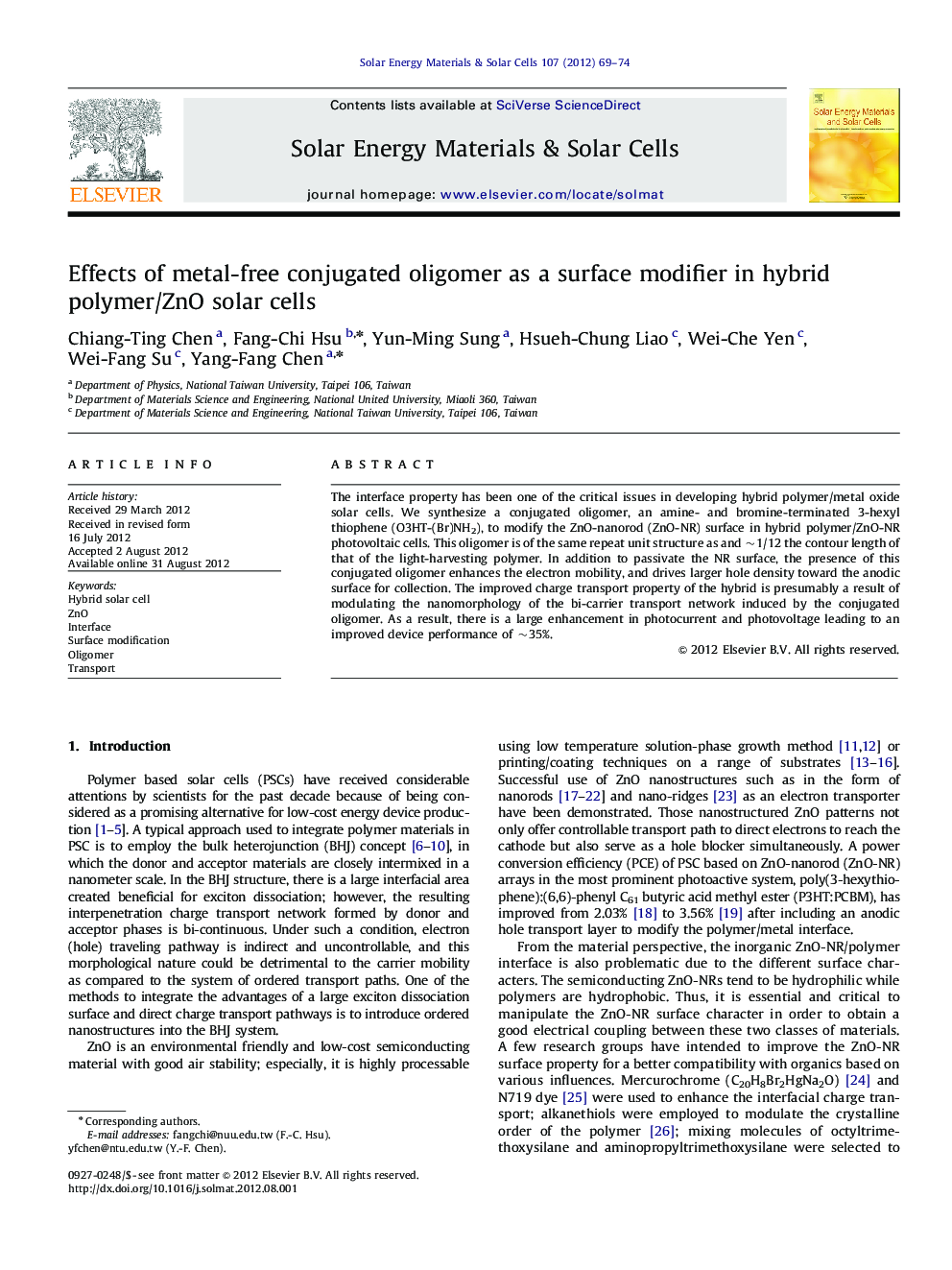| Article ID | Journal | Published Year | Pages | File Type |
|---|---|---|---|---|
| 78894 | Solar Energy Materials and Solar Cells | 2012 | 6 Pages |
The interface property has been one of the critical issues in developing hybrid polymer/metal oxide solar cells. We synthesize a conjugated oligomer, an amine- and bromine-terminated 3-hexyl thiophene (O3HT-(Br)NH2), to modify the ZnO-nanorod (ZnO-NR) surface in hybrid polymer/ZnO-NR photovoltaic cells. This oligomer is of the same repeat unit structure as and ∼1/12 the contour length of that of the light-harvesting polymer. In addition to passivate the NR surface, the presence of this conjugated oligomer enhances the electron mobility, and drives larger hole density toward the anodic surface for collection. The improved charge transport property of the hybrid is presumably a result of modulating the nanomorphology of the bi-carrier transport network induced by the conjugated oligomer. As a result, there is a large enhancement in photocurrent and photovoltage leading to an improved device performance of ∼35%.
► Using metal-free conductive oligomer to modify ZnO-nanorod surface. ► The chemical structure of the oligomer is similar to the light-harvesting polymer. ► The oligomer improves the polymer–ZnO-nanorod compatibility. ► The oligomer enhances the bi-carrier transport properties of the device. ► Nanomorphology modulation of the active blend induced by the oligomer.
